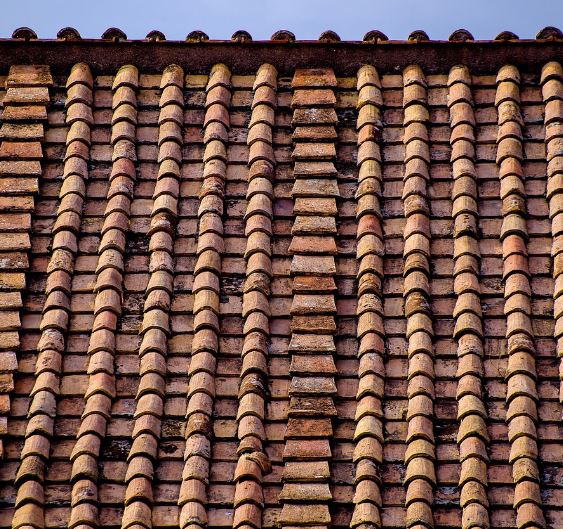Tips for Gardening: Easy Ways to Grow a Thriving Garden

Getting Started in Gardening
Starting a garden can be a rewarding experience. Knowing where to plant, understanding your climate, and having the right tools will help you grow healthy plants.
Selecting Your Garden Spot
Choosing the right location is crucial. Look for a spot that gets full sun for at least six hours a day. This ensures that your plants can thrive.
Consider the layout of your garden. A flat area is easier to work with than a sloped one. Also, make sure your garden is close to a water source for easy access.
Check for any obstacles, like large trees or buildings, that might block sunlight. Avoid low areas where water can collect, as this can harm your plants.
Setting up a small garden in a USDA hardiness zone suitable for your chosen plants will give you the best chance for success.
Understanding Your Climate
Recognizing your climate is important for selecting plants that will grow well. Each area is affected by factors like rainfall, temperature, and seasonal changes.
Research your local hardiness zone to determine which plants are most suitable. For example, if you are in a warmer zone, you may enjoy growing tropical plants. In cooler zones, look for hardy vegetables that can withstand frost.
Keep track of your local weather patterns. Knowing when the last frost date occurs can help you plan when to start your seeds. This will encourage healthy growth and higher yields.
Gardening Tools Essentials
Having the right gardening tools makes your tasks easier. Here are some must-haves for beginner gardeners:
- Hand trowel: Great for digging and planting small items.
- Pruning shears: Useful for trimming and shaping plants.
- Water Pump or hose: Essential for keeping your plants hydrated.
- Garden gloves: Protect your hands and improve your grip.
Consider a garden fork for loosening soil and a rake for leveling the ground. These tools will help you maintain a healthy garden environment.
By gathering the right tools, you set yourself up for a successful gardening journey.
Preparing Your Garden
Getting your garden ready is a key step to growing healthy plants. You’ll want to test and improve your soil, as well as select the right containers or raised beds for your space.
Soil Testing and Amendment
Start by testing your soil. A soil test helps you understand its pH and nutrient levels. You can find testing kits at garden centers or send samples to a lab. After testing, you can figure out what your soil needs.
If your soil lacks nutrients, you might need to amend it. Common amendments include compost, manure, or specific fertilizers.
When adding amendments:
- Mix well: Blend them into the top 6 to 12 inches of soil.
- Check moisture: Ensure the soil is damp, but not soggy.
Good soil is loose and has a balance of sand, silt, and clay. It should also retain moisture while draining well.
Choosing Containers and Raised Beds
Containers are a great way to garden, especially in smaller spaces. When choosing containers, look for those with drainage holes. They allow excess water to escape, helping prevent root rot.
Consider these options:
- Material: Choose from plastic, clay, or metal. Each has its pros and cons.
- Size: Larger containers hold more soil and retain moisture better.
Raised garden beds are another good choice. They offer better drainage and can warm up quicker in spring. Here are some tips for setting them up:
- Height: Choose a comfortable height for you to work in without bending too much.
- Size: A width of 4 feet helps you reach the center easily.
Filling your container or raised bed with a mix of good soil and compost promotes healthy plant growth.
Plant Selection and Planting Techniques
Choosing the right plants and techniques for your garden is key for success. Understanding the differences between annuals and perennials can help you decide what to plant. Additionally, knowing effective ways to transplant and seed can significantly affect your garden’s growth.
Deciding Between Annuals and Perennials
When selecting plants, consider annuals versus perennials. Annuals are plants that complete their life cycle in one year. You must replant them each season. They often bloom all summer, providing vibrant color.
On the other hand, perennials return year after year. They may take longer to establish but will bloom again. Decide based on your garden goals. If you want ongoing color without replanting, perennials are great.
For a vegetable garden, you might favor annuals for quick harvests. In a flower garden, a mix of both can create lasting beauty. Also, if you plant herbs, consider choosing perennial herbs for continuous use.
Effective Transplanting and Direct Seeding
Transplanting involves moving seedlings into the garden after they have grown. This method can give your plants a head start. Be mindful of your last frost date when transplanting. Wait until the soil is warm enough.
Direct seeding is planting seeds straight into the ground. This method works well for many veggies and flowers. It’s often easy and cost-effective.
Before planting, prepare the soil. Ensure it’s loose and rich in nutrients. Water it well after planting, and keep an eye on moisture levels.
Whether you’re starting an herb garden or a flower patch, understanding these techniques helps your plants thrive. Take your time to plan, and enjoy the gardening process!
Maintaining Your Garden
Keeping your garden healthy requires attention to watering, fertilization, pruning, and pest management. Each of these areas plays an important role in the growth and success of your plants.
Watering and Fertilization Practices
Watering is crucial for plant health. It’s best to water early in the morning or late in the evening. This helps reduce evaporation. Make sure to water deeply to encourage strong root growth.
- Water needs will vary by plant type. Some prefer moist soil while others thrive in drier conditions.
- Adding organic matter like compost can improve soil health. This allows for better water retention and nutrient delivery.
Fertilization should follow the specific needs of your plants. Use a balanced fertilizer, or one tailored to your garden’s requirements. Liquid fertilizers can provide a quick nutrient boost.
- Consider applying fertilizer every 4-6 weeks during the growing season. Always follow the package instructions for best results.
Pruning and Deadheading for Growth
Pruning helps maintain the shape and health of your plants. It encourages new growth and removes dead or damaged branches.
- Use clean, sharp tools to make precise cuts. This reduces the risk of disease.
- Focus on removing any dead, diseased, or crossing branches.
Deadheading is the process of removing spent flowers. This encourages further blooming and keeps your garden looking tidy.
- Aim to deadhead regularly during the flowering season.
- This practice can also prevent plants from going to seed too early.
Monitoring and Managing Garden Pests
Keeping an eye on your garden for pests is essential. Regular checks can help you catch infestations early.
- Look for signs like chewed leaves, webs, or droppings.
- Common pests include aphids, slugs, and spider mites.
For pest control, consider using natural methods first. Introducing beneficial insects like ladybugs can help manage harmful pests. If needed, organic pesticides can be effective too.
- Always apply pesticides in the evening to protect beneficial insects.
- Read and follow the instructions for any products you use to keep your garden healthy and vibrant.
Enhancing Garden Growth
To grow healthy plants, you need to focus on both soil health and plant relationships. Improving your soil and utilizing companion planting techniques can make a significant difference in your garden’s success.
Improving Soil Health Through Composting
Composting is a great way to enrich your soil naturally. By combining kitchen scraps, yard waste, and other organic materials, you create a nutrient-rich amendment for your garden.
- Gather Materials: Collect green materials like fruit peels and brown materials like dry leaves. Keep a balance for best results.
- Layering: Layer your compost pile to help with aeration. Start with coarse materials like twigs at the bottom and alternate between greens and browns.
- Turning the Pile: Turn your compost every few weeks to speed up the decomposition process. This helps improve airflow and temperature.
Using compost enhances soil structure, retains moisture, and encourages healthy bacteria and worms. Healthy soil leads to strong plants with improved yields throughout the growing season.
The Benefits of Companion Planting
Companion planting involves growing different plants close together for mutual benefits. This technique can help maximize space and improve your garden’s health.
- Pest Control: Certain plants can repel pests. For example, planting marigolds can keep nematodes away from your tomatoes.
- Nutrient Sharing: Some plants, like corn and beans, work well together. Beans fix nitrogen in the soil, improving fertility for corn.
- Pollinator Attraction: Diverse plantings attract more pollinators. This can increase fruit and vegetable production by improving pollination.
By using companion planting, you can create a thriving garden ecosystem. This method helps your plants grow better together, leading to a more productive garden.
Attracting Wildlife to Your Garden
Creating a space for wildlife in your garden is enjoyable and beneficial. You can draw in butterflies and hummingbirds with the right plants and features. Keeping your garden vibrant with colors will make it a lively spot for these creatures.
Creating a Pollinator-Friendly Space
To attract pollinators, focus on planting a variety of flowers that bloom at different times. This ensures that there is always something blooming throughout the growing season.
Choose plants like coneflowers, black-eyed Susans, and lavender. These plants are not only colorful but also provide nectar and pollen.
Consider grouping flowers in clusters to make it easier for pollinators to find food. Avoid using pesticides, as they can harm bees and other beneficial insects. Adding features like a small water source or a bee hotel can provide a welcoming habitat for more pollinators.
Using Plants to Attract Butterflies and Hummingbirds
Butterflies and hummingbirds love bright, vibrant flowers. Plant milkweed to attract butterflies, as it serves as a host for their larvae. Similarly, bee balm and salvia draw in both butterflies and hummingbirds with their rich nectar.
Aim for colors like red, orange, and yellow; these are particularly appealing to hummingbirds. Your garden can be a resting spot for these creatures if you add flat stones for sunbathing and small water dishes for drinking.
Consider planting in sunny areas, as butterflies and hummingbirds are attracted to warmth and light. With these simple steps, you’ll create an inviting environment for these beautiful visitors.







